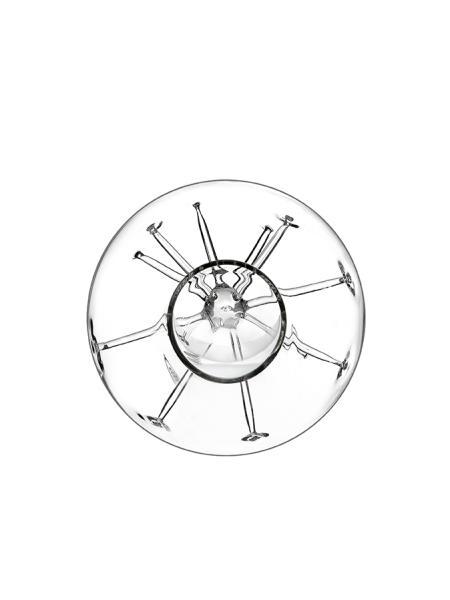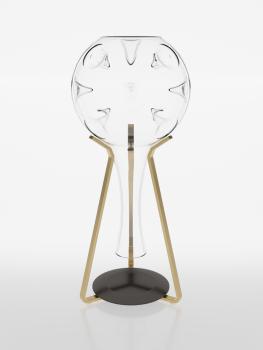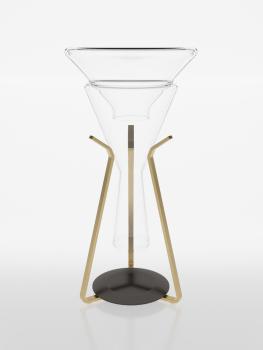The small decanter ”Star“ synergizes the aesthetics of a unique copy with the functionality of a professional tool for vinophile pleasure. The individual star raises each carafe to an exceptional piece. This artfully created centerpiece becomes a unique element in an excessively complex multi-stage process.
This is pure luxury in our uniform world because not a single star is of the same kind. The small ”Star“ is particularly suitable for the decantation of open wines or small bottles. The ideal charge to provide a maximum of oxygen is 0.375 ltr. The reduced size allows to decant white wines and still to temper them in wine coolers. Also for dessert wines, the staging of innovative high-end cocktails, flavoured spirits, to the point of exotic juices this unique product is the perfect solution.
Design: Detlef Greiner-Perth
"Many decanters provide a fast but completely unbalanced development of wines because the wines develop only by a macro-oxidation on the surface. It’s more balanced and harmonic to implement the necessary oxygen in a very soft and gentle way. The filigree rays of the centric star animate the served wine to a very soft enhancement. During the slewing the oxygen is mildly folded in and integrated into the wine. Thus the wine starts to develop on its own terms and not – as with other decanters – just on the surface. By using borosilicate glass as raw material for this decanter, which stands out by its extremely smooth surface, another highly pleasant effect is created: the aromatic molecules are not expelled from the wine but allowed to present themselves completely in the wine glass. The aerated wine becomes extremely balanced, carefully crafted and centered. An additional value which is simply priceless!“
Silvio Nitzsche
WEIN | KULTUR | BAR Dresden
content bowl: approx. 0.7 l
diameter: 11.5 cm
height: 24 cm
Care instructions decanter: Looking at “Star” almost everybody, who already gained experience with decanters, will intuitively ask how to clean it. Many decanters have the nature, in particular when used for red wines, to absorb the colour pigments and to show light grey or brown surface layers after a certain usage. Most of these carafes have microscopically seen a rough surface which leftovers of the wine might adhere to and cause an unattrac-tive appearance of the decanters. With our decanter, made of borosilicate glass, this effect might appear after a much longer period due to the extremely smooth and re-pellent surface of this high-quality laboratory glass. In case it actually happens these traces can easily be removed by using a mixture of citric acid and water. After a 2 hour residence time the problem should be solved.



























